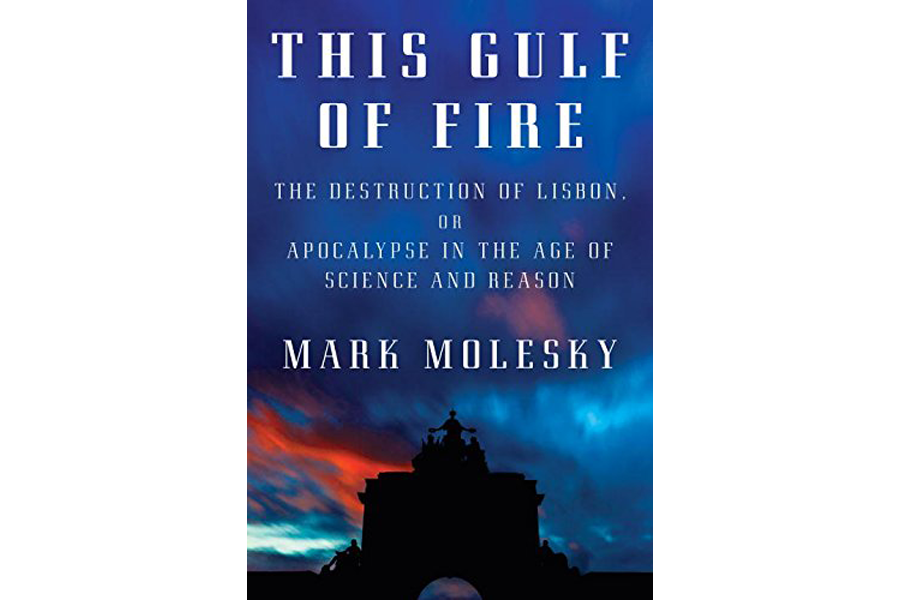'This Gulf of Fire' tells of the quake that rocked a most rational Europe
On All Saints’ Day in 1755, an earthquake stemming from a fault line in the Atlantic Ocean ripped through Lisbon, destroying most of the city and reverberating through much of Europe and North Africa. As if the earthquake weren’t enough, a tsunami then hit the wounded city, followed by an inferno – sparked by candles in the wreckage – that burned for days. The disaster rocked Europe in ways that a modern audience might have trouble comprehending – particularly since the quake has been largely forgotten. Yet, argues Mark Molesky in This Gulf of Fire, his excellent book on the topic, what happened in Portugal left a lasting mark on Europe.
Molesky’s book is a comprehensive account of nearly every aspect of this disaster. He takes us on a whirlwind tour through Lisbon on the eve of the quake: a capital with coffers swollen by gems and gold from the New World, a port clogged with ships from all over Europe, a decadent Babylon of pink marble palaces and opera houses. In a few minutes it was all gone. Lisbon’s inhabitants were crushed by their falling homes, burned or drowned; the city was destroyed. As in any disaster story, great heroism and great treachery abounded, and Molesky shows us plenty of examples of both. He introduces us to a Franciscan priest who helped lead the relief effort and to thieves who lured survivors out of their homes so they could plunder.
But although the narrative hits the typical beats of a disaster story, Molesky’s book also places this earthquake firmly in its historical context, arguing that the quake and its resultant disasters helped to shape the 18th century.
Molesky demonstrates that this earthquake precipitated the first international relief effort, as foreign powers sent money to Portugal in an attempt to mitigate the disaster’s effects. He also illustrates an early modern example of a leader using a disaster to consolidate power: in this case, Secretary of State Pombal, who became the de facto head of government in the wake of the disaster and shoved through reforms, weakened royal power, and imprisoned many of his political enemies.
But perhaps the earthquake’s most important legacy was the debate it provoked among Enlightenment thinkers. In an optimistic age, when the violence of the wars of religion had receded into the past and Europe was on a scientific and material upward trajectory, the earthquake was a grim reminder of the chaos underlying the natural world. In the years following the quake, theologians, politicians, writers, and philosophers all weighed in on pressing questions: How could a beneficent, all-powerful God permit a holocaust like this? Was God to blame for the earthquake or should thinkers focus solely on understanding the natural causes of earthquakes and tsunamis? Was Lisbon’s decadence – or its flagrant Catholicism – to blame?
In fact, these questions were so pressing that they marked turning points in the careers of Voltaire, Immanuel Kant, and Jean-Jacques Rousseau, three of the most influential Enlightenment thinkers. The earthquake forced Voltaire to question his optimism and his belief that the world was full of possibility; the earthquake allowed Rousseau to condemn the immorality of society while simultaneously upholding the morality of a divine being. And it encouraged Kant to adopt a more rational and empirical approach in his writings.
Molesky’s narrative flags in some sections, such as in the early chapters tracing the history of the Iberian Peninsula from antiquity to the early modern age, or the attempt to reconcile reports of the final death toll.
But these sections are few and far between, and overall, Molesky’s attention to detail only serves to bolster his narrative. He writes of Lisbon’s river eerily draining in the moments before the tsunami, of expensive suits of armor shattered and traders’ records lost forever, of church chandeliers quaking and groaning in parishes as far away as England and the Netherlands, and of a Massachusetts trader who survived the earthquake but locked himself in a room every year on the anniversary to fast, pray, and self-abase. With these details, Molesky forces readers to confront the underpinning of any disaster story: the notion that anything built by man can unravel with unthinkable speed – leaving us to scramble to understand who we are and what we must do.
Emily Cataneo is a freelance writer based in Berlin.






